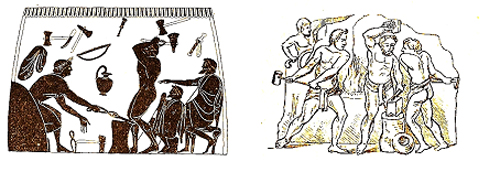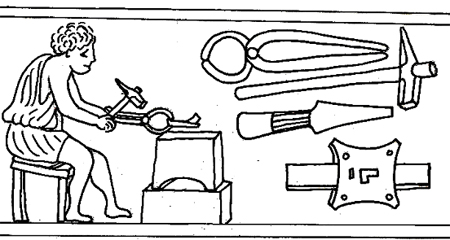This period of Roman history, called the Principate (from the Latin Princeps, a high title in the Roman senate), lasted from 27 BC to 284 AD and was the empire’s period of greatness, when it reached its largest geographic spread. It was also a flourishing, dynamic period for architecture, art, literature and political thinking.
At the beginning of the Principate, the Etruscans had long been defeated and integrated into the population. Carthage was also defeated and eliminated, Greece and all of its colonies had been conquered and their culture had been adopted as a national model. The Mediterranean was a Roman lake. Cicero (106–43 BC) had been murdered, Cato the Younger (95–46 BC) had committed suicide. With the murder of Gaius Julius Caesar (100 or 102–44 BC) and the suicides of Antony (83–30 BC) and Cleopatra (68–30 BC) the Republic had been lost.
The over 500-year-old city of Rome was the seat of the government and had become the center of the western world. The lingua franca was Latin.
The first of a long series of emperors was Gaius Octavius Thurinus (63 BC–14 AD). He was the son of Julius Caesar’s niece, was adopted by him and became his heir. After Antony’s death, this Octavius found himself with all power in his hands and took the name Augustus – Majestic – with the aim of finding a way of ruling the empire. He became a dictator with practically unchecked power in the name of the people. During his reign the seeds of Christianity were sown. The seventh and eighth months in our Julian calendar are still named in honor of the memory of Julius Caesar, July, and Augustus, August.
During the first 200 years the Romans lived in relative peace around the Mediterranean (known as the Pax Augusta) while the armies fought endless battles on the frontiers. During the years after the death of Augustus, the Roman Empire went through constant power struggles. The emperors tried to outdo each other in building giant baths and numerous temples for rites. They also built theaters and amphitheaters to entertain the masses. Rome was a strict class society with extreme financial differences between slaves, plebians and patricians.
A Roman city provided many services for its residents. The city was a physical manifestation of the social and financial powers at work there. The Romans were extremely practical and the Roman Empire was built and developed to a large degree thanks to skilled engineers and architects. They demonstrated technical skills never before seen in history. They not only planned cities, they built buildings, roads, aqueducts, bridges, ports, ships, walls, sports arenas and much more. They created and utilized tools and instruments with qualities that are still used in our day. Their knowledge was passed along to professional craftspeople with their own workshops in the cities.
 |
| Greek and Roman smiths at work. From Technik des Altertums. |
The craftsmen were organized in collegia, which spread through Byzantium to become the guilds that arose in Medieval Europe. Both slaves and free men worked in the workshops. Raw materials were bought from all parts of the empire and sold to artisans on the local market. The local wine production was particularly profitable.
Much of the manufacturing of consumer goods also took place in the cities. The raw materials, such as living animals, came from surrounding farms. Domestic trade was conducted via an extensive network of excellent roads leading to all parts of the empire. Huge amounts of wealth accumulated in Rome and other cities. The excess capital also led to a need for burglarproof storage. In this field as well, the Roman engineers and craftsmen demonstrated superb innovativeness.
 |
| Locksmith at work. His tools and a door lock are shown to the right. Roman relief from Aquileia. Sketch by the author. |